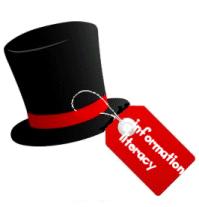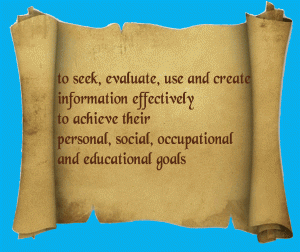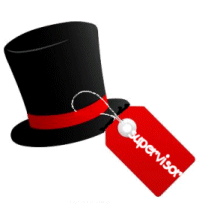This hat is based on creating a strategic plan for building an Information Literate School Community. While the school at its focus is hypothetical, the plan’s purpose is to provide a model for how this might be done but it needs to be adapted to suit each particular set of circumstances.
Towards an Information Literate School Community
A strategic plan for Alpine Waters Primary School
Preamble
This sets the scene and provides the reasons for change.
Alpine Waters is a government K-6 primary school committed to enabling each student to become an independent lifelong learner through excellence in teaching based on the principles of high expectations, social justice, community participation, future orientation and accountability. However, a formal school review and external measures such as NAPLAN results suggest that it is not meeting its goals. Preparation for the introduction of the national curriculum in 2014 provides a timely opportunity to examine philosophies, policies, programs, practices and priorities to shape the school’s future.
Purpose
Identifying the purpose for the plan informs those stakeholders of its parameters so all decisions are based on achieving the outcomes.
The purpose of the plan is to provide the blueprint for developing an information literate school community which
- is dedicated to mastering information literacy so staff and students can
- identify their need for information
- locate appropriate information and evaluate, interpret and use it to satisfy the particular needs of the situation
- understand what forms of information are valid, valuable and valued within a particular context
- interpret and align those sources which confirm, challenge or change what is already known to reach a new understanding and construct new information
- use and communicate what has been learned so it can be implemented, and, in turn, built on
- is based on constructivism, constructionism, collaboration and communication
- has information literacy and the use of digital technologies and resources embedded as across-curriculum perspectives
- provides authentic tasks and assessment to enable the development of information literacy within meaningful contexts
- understands and values the role of the teacher librarian
- has policies and practices addressing
- access to and use of information including intellectual freedom, intellectual property and ethical use
- access to and use of digital technologies
- school library resource development and managemen
- acknowledges that each community member is a teacher and learner at the same time
- supports the professional learning of staff
People
Identifying the stakeholders and their roles sets the tone for the language of the plan and the sphere in which it is to be used.
The target group is the staff, teaching and non-teaching, of Alpine Waters School and, through them, the students and the wider community. Initial leadership will be provided by the principal and teacher librarian but this will devolve to interested parties as their expertise develops.
Positives
Examining the current situation identifies the benchmarks from which growth will occur as well as the platform on which changes can be set.
- The principal is anxious for change and will commit staffing, money and time to enable it, providing overt support to the teacher librarian.
- The teacher librarian has the experience and expertise to guide the development of an ILSC.
- Two teachers have indicated they are looking for alternative pedagogies to improve student outcomes.
- Access to some digital technologies has improved and the Internet is now accessible, reliable and affordable.
- The introduction of the national curriculum provides a solid reason for change.
- Staffing is stable so change is likely to be sustained.
Problems
Examining the current situation identifies issues which need to be addressed and helps establish priorities.
- Current teaching practices are ingrained despite evidence that they lack effectiveness, so staff may be resistant to change and defensive.
- Need to convince staff of the value of the new approach so that it is not seen as another new fad adding to their workload.
- Collaborative planning between teachers and teacher librarian is rare.
- Lack of understanding of the role of the teacher librarian in the 21st century.
- Resistance to embedding ICT in pedagogy because of inexperience and no critical mass of hardware available at the point of need.
Period
Setting a time period based on identifiable markers ensures that progress is sustained and measured.
It is acknowledged that sustainable change will take time. However NSW is committed to implementing the national curriculum in 2014 and so the plan will be implemented over 2012-2014. In Term 4, 2011, the teacher librarian and a committee comprising the principal and interested staff members will be formed to initiate the change so it can be introduced on the first Staff Development Day (SDD), 2012.
Plan
Preparation of a plan means goals, performance indicators, responsibilities and timeframes are clearly identified and therefore change is likely to be achieved.
A detailed plan has been prepared encompassing
- a timeline of development
- the key strategies for development employing a variety of design and delivery methods which model those strategies in practice
- scheduled review and reflection
- a range of groupings including whole staff, small groups and 1:1 mentoring relationships
- opportunities for leadership
- indicators of success.
It is designed to enable participants to understand the theoretical and pedagogical foundations of the changes and encouraging them to take ownership of these through their own planning, programs and practices.
Although it is a map to the destination of an ILSC, it is acknowledged that this concept changes according to the circumstances of its community and therefore the map should also be seen as just a guideline able to be changed to meet change.
Performance Indicators
Providing milestones ensures that goals can be achieved in incremental steps and their efficacy measured and adjusted as necessary. Including the anticipated outcomes of the plan provides a specific, measurable goal on which all decisions should be based.
By 2014, the staff of Alpine Waters should be in a position to implement the national curriculum on a solid foundation of the known and accepted philosophy, pedagogy, programming and practices of an information literate school community. Students will be engaged with their learning and demonstrating their confidence and competence with information literacy at an appropriate level. Internal and external benchmarking will show improvement. The teacher librarian will be an integral part of the teaching and learning culture working on a flexible schedule in a collaborative planning and teaching environment and the library will be the valued hub of the learning community.
| Timeframe | Strategy | Responsibility | Performance Indicators |
| Term 4, 2011 | Development of draft plan | Teacher Librarian, Principal | Draft plan available for discussion |
| Establishment of committee to consider draft plan | Teacher Librarian, Principal, Interested staff | Draft plan edited and approvedSDD planned and resources prepared | |
| Familiarisation with new concepts through professional learning | Teacher Librarian | Committee familiar with Information Literacy Process (ILP) and Guided Inquiry (GI) | |
| SDD, Term 1, 2012 | Introduction to Australian Curriculum and its implications for pedagogy | Principal | Staff made aware of the key changes imposed by theAustralian Curriculum and their responsibilities to address these. |
| Staff engage in practical exercise to plan a perfect holiday | Committee Members | Staff understand that learning is constructed on personal experience and perception and need for more individualised approach | |
| Overview and explanation of ILP using slideshow, Eisenberg podcast and handout | Teacher Librarian | Staff introduced to common strategic structure to scaffold student learning – discussion of Eisenberg’s contention that “information literacy is the most basic of basics” | |
| Staff engage in chocolate-sharing exercise | Committee Members | Staff employ ILP and understand its application as an across-curriculum perspective | |
| Using current school-wide unit based on values, staff brainstorm outcomes | Teacher Librarian, Staff | Identification of desired knowledge, understandings, attitudes and skills as a result of a School Values unit and evidence of achievement | |
| In year level groups, staff plan Values unit using ILP scaffold | Staff, Teacher Librarian | Ready-to-use unit based on information literacy and GI principles | |
| Term 1, 2012 | Teacher Librarian works with year-level groups to collaboratively plan and implement first COGS unit based on ILP and GI in scheduled planning sessions | Staff, Teacher Librarian | Collaborative planning between teachers and teacher librarianUnits of work demonstrate understanding of ILP and GI”Library lessons” closely connected to class program |
| Appraisal of current collection to ensure it supports current and intended curriculum | Teacher Librarian | Collection weeded and new resources identified and acquired | |
| Relevant professional readings distributed and discussed and support materials developed during staff meetings | Teacher Librariam, principal, committee members, staff | Professional learning expanded | |
| Review of progress and identification of needs and directions | All stakeholders | Preparation of units and support materials and review of progress encourage staff to take ownership of changes | |
| SDD, Term 2, 2013 | Introduction to Guided Inquiry | Guest speaker | Staff provided with pedadogy and practical strategies for planning and implementing units |
| Planning of T2 units based on GI | Speaker, staff, Teacher Librarian | Units reflect constructivist apporach based on GI | |
| Term 2, 2012 | Continued collaborative planning between teams and Teacher Librarian during scheduled sessions | Teacher Librarian, Staff | GI principles and ILP evidenct in COGs unit planning |
| Development of repository of digital resources to support curriculum | Teacher Librarian | Resources added to OPAC; development of hotlists, learning paths; email alerts to staff etc | |
| Review of progress and identification of needs and directions | All stakeholders | Evidence of commitment to philosophy and pedagogy by teachers | |
| SDD, Term 3, 2012 | Exploration of how ICT can be embedded in curriuclum beyond “typing stories” | District ICT co-ordinatior, Teacher Librarian, competent staff | Exploration of a range of tools including OPAC, wikis, blogs, and resources available through the National Learning Digital Resources Network |
| Identification of needs/strengths and establishment of mentor partnerships | All stakeholders | Partnerships established to encourage exploration and embedding of ICT into the curriculum | |
| Term 3, 2012 | Continued collaboration between teams and techer librarian in scheduled planning sessions with emphasis on embeddingICt | Teacher Librarian, staff | GI and ILP strategies consolidated |
| Scheduled, rostered “show-and-share” sessions at staff meetings | Staff | Staff demonstrate their adoption of and competence with ICT in a particular context and share and discuss ideas | |
| Review of the use of ICT in school-based administrative duties and communications | Principal, admin staff, teachers | Identification of professional learning needs, hardware, software and so forth to support the embedding of ICT into school administration, including the use of social networking to communicate with parents | |
| Review of progress and identification of needs and directions | All stakeholders | Identification of professional learning needs, hardware, software and so forth to support the embedding of ICT into the classroom program and class-based administrative tasks | |
| SDD, Term 4, 2012 | Development of a formal policy embedding GI and the ILP as the foundation principles for planning and pedagogy at Alpine Waters School | All stakeholders | Policy development and implementation |
| Term 4, 2012 | Continued collaboration between teacher librarian and staff | Teacher Librarian , staff | Use of GI and ILP consolidated |
| Review of progress and identification of needs including the restructuring of the teacher librarian’s role to a flexible schedule to be available at the point of need. | All staff | Reflection of changes to pedagogy; discussion of issues and possible solutions; identification of targets and performance indicators for 2013 based on identified needs and priorities | |
| 2013 | The program for 2013 will depend on the progress made in 2012. However it is anticpated it will encompass
|
||




